What Is Chambray Fabric?
27 Feb 2024
Chambray is a fabric that not only has a French name but also French roots. With a French name, this material is often confused with denim fabric. Although the visual similarities between the two are certainly evident. In classic terms, chambray fabric has similarities to the lightweight hemp material that is the progenitor of modern denim. This fabric was invented in the 15th century. Flax and then cotton were used to create a lightweight but durable fabric. To date, chambray is a group of fabrics that have the same purpose but a different composition. It turned out to be much more practical and profitable. Chambray fabric is an excellent material for making work uniforms. The chambray fabric shirt was considered an indispensable element of many uniforms. The material "denim" is popular in clothing production, but did you know it has an analog? Chambray fabric, which is similar to denim almost like a twin brother. Fabric "chambray" - what it is, what its characteristics are, about this further in the article.
There are fabrics filled with a sense of vacation and freedom. There is the breath of the wind and the smell of rain-washed roads. These include durable denim and a wonderful fabric that is extremely similar to denim but differs from it in its lightness, softness, and breathability - chambray fabric. Among the fabrics for working are summer clothes and creating elements for the image in casual style, which are suitable for dense, practical, and lightweight fabrics. For example, the material with a French name was time-tested and improved to the modern state - chambray fabric over several centuries. This fabric is similar to denim but thinner and lighter. Learn about the properties of this material, and you'll want to at least try on a couple of things made of it. Chambray is a linen or cotton fabric that resembles denim. Because of its practicality has been used for more than 100 years for military clothing and uniforms for civilian professions. The article tells how the chambray fabric appeared, what kind of material it is, and what properties and features it has.
There are fabrics filled with a sense of vacation and freedom. There is the breath of the wind and the smell of rain-washed roads. These include durable denim and a wonderful fabric that is extremely similar to denim but differs from it in its lightness, softness, and breathability - chambray fabric. Among the fabrics for working are summer clothes and creating elements for the image in casual style, which are suitable for dense, practical, and lightweight fabrics. For example, the material with a French name was time-tested and improved to the modern state - chambray fabric over several centuries. This fabric is similar to denim but thinner and lighter. Learn about the properties of this material, and you'll want to at least try on a couple of things made of it. Chambray is a linen or cotton fabric that resembles denim. Because of its practicality has been used for more than 100 years for military clothing and uniforms for civilian professions. The article tells how the chambray fabric appeared, what kind of material it is, and what properties and features it has.
What Is Chambray?
Chambray is a durable two-color fabric made of cotton threads. In structure, it resembles cambric, and in appearance, it is a thin denim. Chambray fabric differs from denim in how the fabric is woven: for denim, the twill method is used, and for chambray fabric- plain weave. Chemical and thermal treatment makes denim shabby. For chambray fabric, the effect is given by the interweaving of differently colored threads. This type of fabric is often used to make men's and women's work shirts . Interestingly, shirts made of chambray fabric were part of the uniforms of U.S. sailors at the beginning of the XX century. It was also used to make work uniforms, and the color of these shirts owes to the name for office workers - "blue collars." Chambres are made from natural raw materials of vegetable origin, and most of the production is in China.
Chambray fabric is a working, sturdy fabric of a faded shade. The reason for such an original tone is the poor setting of the dye. Mostly from the fabric sew things of muted, natural colors. These are pastel, brown, gray, blue, and blue products. The material of natural origin is made almost one hundred percent from cotton. A characteristic feature of the chambray fabric is its similarity to denim. This is due to the following features: 1. cross threads are relatively loose and predominantly white; 2. the main thread is dense and has a pronounced color. To give greater similarity to denim material, masters use a contrasting thread, stitching the edges and seams of products. The fabric turns out to be homogeneous on all sides; there is no underside or front part.
Chambray fabric is a working, sturdy fabric of a faded shade. The reason for such an original tone is the poor setting of the dye. Mostly from the fabric sew things of muted, natural colors. These are pastel, brown, gray, blue, and blue products. The material of natural origin is made almost one hundred percent from cotton. A characteristic feature of the chambray fabric is its similarity to denim. This is due to the following features: 1. cross threads are relatively loose and predominantly white; 2. the main thread is dense and has a pronounced color. To give greater similarity to denim material, masters use a contrasting thread, stitching the edges and seams of products. The fabric turns out to be homogeneous on all sides; there is no underside or front part.
History of Chambray Fabric
The history of chambray fabric began in the mid-1500s; at that time, this material appeared under the name 'cambric.' It is a lightweight fabric made from linen. It was created in Cambrai, a former Flemish region in northern France. The high-quality material was often used for shirts, handkerchiefs, and lace. The cotton chambre separated from the cambre and became 'chambray' in English spelling. And the linen fabric became better known as batiste. In the 1800s, chambray fabric was particularly sought after by American farmers. They proclaimed it "a soft material that protects from the sun and gives coolness."
Chambray fabric originated in the French commune of Cambrai in the 16th century. At first, it was made of linen, but in the XIX century, it was replaced by cotton. The material was mainly used to sew work clothes. as well as things for clergymen. The fabric was used to reinforce collars and cuffs in linen shirts with linen in its composition. The principle of creation is similar to the production of denim. It consists of the use of white thread in the weft of the cross weave and the base color. The threads are woven evenly - one on the other, so chambray fabric does not have a pronounced whitish underside like denim. In structure, it resembles a cambric.
Clergymen first appreciated the remarkable "breathable" qualities of the fabric. Then it began to be used instead of linen to sew bedding, tablecloths, handkerchiefs, underwear, and even children's clothes. Until the 19th century, chambray fabric was used to reinforce the collars and cuffs of linen shirts. Until the end of World War II, shirts made of chambray fabric were worn by soldiers of the American Navy, and afterward, workers and the entire proletariat of the States wore the material. In other countries the fabric was gradually spreading to other countries, including Russia. In the twentieth century, the fabric was used to sew uniforms for the American proletariat, for which the workers were called "blue collar ." Chambray fabric remains popular even nowadays. The development of technology has made it possible to produce products not only in blue but also in white, gray, beige, and brown. Today, the fabric is used to sew stylish wearable shirts that can be worn at home and work.
Chambray fabric originated in the French commune of Cambrai in the 16th century. At first, it was made of linen, but in the XIX century, it was replaced by cotton. The material was mainly used to sew work clothes. as well as things for clergymen. The fabric was used to reinforce collars and cuffs in linen shirts with linen in its composition. The principle of creation is similar to the production of denim. It consists of the use of white thread in the weft of the cross weave and the base color. The threads are woven evenly - one on the other, so chambray fabric does not have a pronounced whitish underside like denim. In structure, it resembles a cambric.
Clergymen first appreciated the remarkable "breathable" qualities of the fabric. Then it began to be used instead of linen to sew bedding, tablecloths, handkerchiefs, underwear, and even children's clothes. Until the 19th century, chambray fabric was used to reinforce the collars and cuffs of linen shirts. Until the end of World War II, shirts made of chambray fabric were worn by soldiers of the American Navy, and afterward, workers and the entire proletariat of the States wore the material. In other countries the fabric was gradually spreading to other countries, including Russia. In the twentieth century, the fabric was used to sew uniforms for the American proletariat, for which the workers were called "blue collar ." Chambray fabric remains popular even nowadays. The development of technology has made it possible to produce products not only in blue but also in white, gray, beige, and brown. Today, the fabric is used to sew stylish wearable shirts that can be worn at home and work.
How Is Chambray Fabric Made?
Although chambray fabric was traditionally made from linen and silk, these days, it is most commonly made from cotton.
The process of making chambray fabric from cotton can be reduced to the following steps:
- Cotton fibers are harvested from cotton seeds by machine or by hand.
- The fibers are separated from the seeds and pressed into large rectangular bales.
- These cotton fibers are then "carded" in a machine that turns them into rope-like strands.
- The carded fibers are then combed before being loaded onto large spools.
- The yarn is then spun from these spools to ensure it is ready to be woven into chambray fabric.
Chambray fabric is woven from two yarns known as the warp and weft. In the production of chambray fabric, both warp and weft yarns are woven alternately over each other.
The process of making chambray fabric from cotton can be reduced to the following steps:
- Cotton fibers are harvested from cotton seeds by machine or by hand.
- The fibers are separated from the seeds and pressed into large rectangular bales.
- These cotton fibers are then "carded" in a machine that turns them into rope-like strands.
- The carded fibers are then combed before being loaded onto large spools.
- The yarn is then spun from these spools to ensure it is ready to be woven into chambray fabric.
Chambray fabric is woven from two yarns known as the warp and weft. In the production of chambray fabric, both warp and weft yarns are woven alternately over each other.
How Is Chambray Fabric Used?
Today, chambray fabric is mostly used in clothing as a substitute for denim. It is most commonly used in jackets , pants, shorts, and even shoes with fabric uppers, where they are often dyed in a similar shade of blue. In addition to clothing, chambray fabric is also used in textiles for the home. This includes the upholstery of armchairs and sofas. It is also used in sheets and pillowcases with a high thread count, preferably softer and breathable.
Chambray fabric is used to sew almost all articles of closet. Shirts and blouses are more common than others, but you can also find shorts, pants, and even ties on sale! However, stylists believe that because of the specific coloring of the fabric in the image, there should be only one item of chambray fabric. You will be too motley if you wear a shirt and shorts made of it at once.
Chambray cotton is the perfect choice for making summer closet items. You can sew sundresses and lightweight dresses from it. Due to its hypoallergenic, wrinkle-free, and hygroscopic properties, chambray fabric is also recommended for sewing children's clothes. Traditionally, it is used to make men's shirts in a casual style. They are very popular, providing comfort and allowing you to create stylish everyday images.
Also, this textile is often chosen for sewing bandanas, beach bags, men's neckerchiefs, and even shoes. In the latter case, a denser chambray fabric is chosen. It is usually used to make comfortable and practical slip-ons, men's or women's espadrilles.
Chambray fabric is used to sew almost all articles of closet. Shirts and blouses are more common than others, but you can also find shorts, pants, and even ties on sale! However, stylists believe that because of the specific coloring of the fabric in the image, there should be only one item of chambray fabric. You will be too motley if you wear a shirt and shorts made of it at once.
Chambray cotton is the perfect choice for making summer closet items. You can sew sundresses and lightweight dresses from it. Due to its hypoallergenic, wrinkle-free, and hygroscopic properties, chambray fabric is also recommended for sewing children's clothes. Traditionally, it is used to make men's shirts in a casual style. They are very popular, providing comfort and allowing you to create stylish everyday images.
Also, this textile is often chosen for sewing bandanas, beach bags, men's neckerchiefs, and even shoes. In the latter case, a denser chambray fabric is chosen. It is usually used to make comfortable and practical slip-ons, men's or women's espadrilles.
Characteristics of Chambray Fabric
- Durability, wear resistance. Chambray fabric can withstand increased loads and mechanical damage. Resistant to abrasion;
- Well absorbs moisture and supports natural ventilation. In the aggregate, the criteria create comfortable conditions for daily wear;
- Wrinkle resistance. After deformation, it returns to its original shape without folds or creases;
- Does not accumulate static electricity. Repels dust;
- Hypoallergenic. Natural and synthetic components are safe for people with hypersensitive skin. Does not cause itching and irritation;
- Well absorbs moisture and supports natural ventilation. In the aggregate, the criteria create comfortable conditions for daily wear;
- Wrinkle resistance. After deformation, it returns to its original shape without folds or creases;
- Does not accumulate static electricity. Repels dust;
- Hypoallergenic. Natural and synthetic components are safe for people with hypersensitive skin. Does not cause itching and irritation;
Chambray Vs Denim
Chambray fabric is not the same as denim. However, they are similar in appearance and are often mistaken for lightweight denim. The difference between chambray and denim fabric lies in the construction of the material. Chambray fabric is made with a plain weave, while denim is created using a twill weave with a coarser texture.
Chambray fabric is a light but, at the same time, dense two-color cotton fabric with a plain weave of threads of light and dark shades, usually blue or blue. This color is muted, not saturated, because the fabric and the finished product look shabby and slightly aged. This effect is confusing, and you can involuntarily confuse the front and back sides.
This is the main difference between chambray and a rougher denim fabric, which has a twill weave and is made of colored threads. And to make jeans, for example, look aged, they are subjected to special treatment. Depending on the production technology and the purpose of the fabric, chambray fabric, like denim, can be lighter or heavier.
Chambray fabric is a light but, at the same time, dense two-color cotton fabric with a plain weave of threads of light and dark shades, usually blue or blue. This color is muted, not saturated, because the fabric and the finished product look shabby and slightly aged. This effect is confusing, and you can involuntarily confuse the front and back sides.
This is the main difference between chambray and a rougher denim fabric, which has a twill weave and is made of colored threads. And to make jeans, for example, look aged, they are subjected to special treatment. Depending on the production technology and the purpose of the fabric, chambray fabric, like denim, can be lighter or heavier.
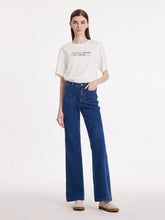
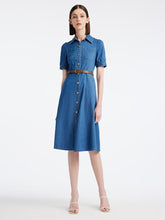
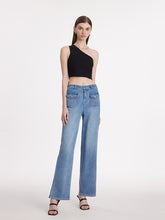
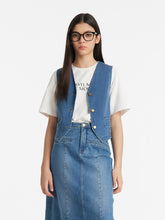
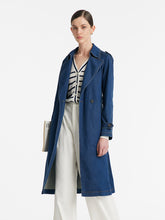
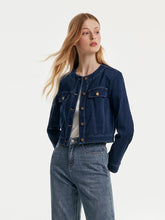
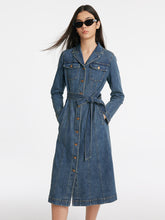



 previous post
previous post






